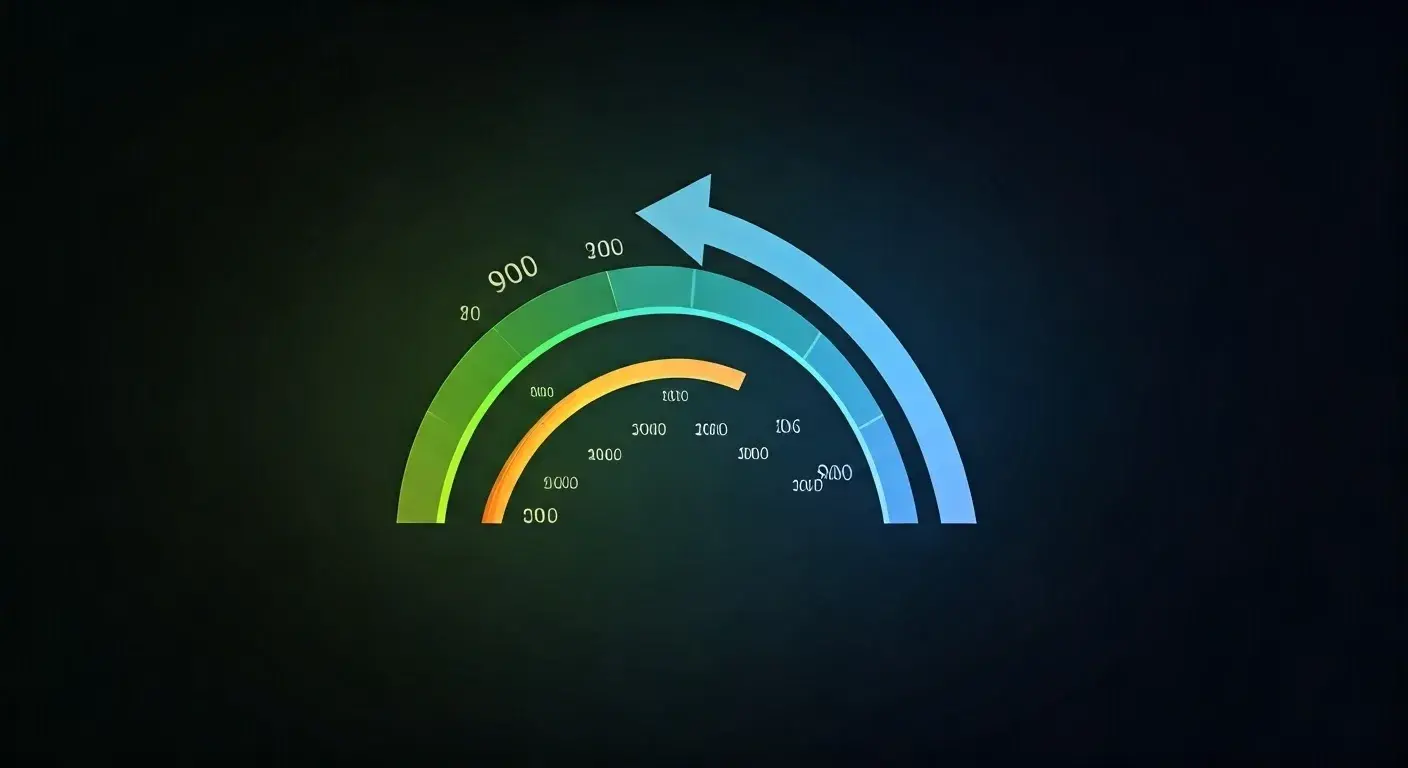-
Posted on: 30 Jul 2024

-
The pursuit of a perfect credit score is a common goal for many. A high credit score can unlock access to better interest rates on loans, credit cards, and mortgages, saving you significant money over time. But is a 1000 credit score even attainable? The short answer is no, but the long answer is more nuanced and involves understanding the different credit scoring models used today. This article will delve into the world of credit scores, explore the different ranges, and explain what you should actually aim for.
Understanding Credit Scoring Models: FICO and VantageScore
Credit scores aren't a universal standard. Different scoring models exist, with the two most prominent being FICO and VantageScore. Each model uses slightly different algorithms and assigns different weights to various factors when calculating your score.
FICO Score: The Industry Standard
The FICO score, developed by Fair Isaac Corporation, is the most widely used credit scoring model by lenders. It’s been around since 1989 and has undergone several revisions to better reflect consumer credit behavior. The FICO score range is typically 300 to 850.
What Factors Influence Your FICO Score?
The FICO score is based on five primary factors, each weighted differently:
- Payment History (35%): This is the most important factor. Making on-time payments consistently is crucial for building and maintaining a good credit score. Late payments, missed payments, and bankruptcies will negatively impact your score.
- Amounts Owed (30%): This refers to the total amount of debt you owe and, more importantly, your credit utilization ratio. Credit utilization is the amount of credit you're using compared to your total available credit. Experts recommend keeping your credit utilization below 30%, and ideally below 10%.
- Length of Credit History (15%): A longer credit history generally indicates responsible credit management. The age of your oldest account, newest account, and the average age of all your accounts are considered.
- Credit Mix (10%): Having a mix of different types of credit (e.g., credit cards, installment loans, mortgages) can demonstrate your ability to manage various credit obligations.
- New Credit (10%): Opening too many new credit accounts in a short period can lower your score. This is because it can signal to lenders that you're taking on too much debt.
VantageScore: A Newer Alternative
VantageScore was created by the three major credit bureaus (Equifax, Experian, and TransUnion) as an alternative to the FICO score. It aims to provide a more consistent and comprehensive credit scoring system. VantageScore also uses a range of 300 to 850.
How Does VantageScore Differ from FICO?
While VantageScore uses similar factors to FICO, it weighs them slightly differently and has some key distinctions:
- Less Emphasis on Past Payment Problems: VantageScore generally places less emphasis on past late payments, especially those that are older.
- Ability to Score Those with Thin Credit Files: VantageScore can score individuals with limited credit history more easily than FICO. This is beneficial for younger adults or those new to credit.
- Utility, Phone, and Cable Payments: VantageScore can consider on-time payments for utility, phone, and cable bills if they are reported to the credit bureaus. FICO typically does not consider these unless they become delinquent and are sent to collections.
The Reality of Credit Score Ranges: What's Considered "Excellent"?
Since both FICO and VantageScore have a maximum score of 850, a 1000 credit score is simply impossible. Understanding the different score ranges and what they signify is more valuable than chasing an unattainable perfect score.
FICO Score Ranges and Ratings
- 800-850: Exceptional This is considered excellent credit. You'll likely qualify for the best interest rates and terms on loans and credit cards.
- 740-799: Very Good This is also considered a very strong credit score. You'll likely be approved for most credit products with favorable terms.
- 670-739: Good This is an average credit score. You'll likely be approved for credit, but the interest rates may not be the lowest available.
- 580-669: Fair This is below average credit. You may face higher interest rates or be denied credit altogether.
- 300-579: Poor This is considered very poor credit. It will be difficult to get approved for credit, and any credit you do obtain will likely come with very high interest rates.
VantageScore Ranges and Ratings
- 781-850: Excellent Considered excellent credit, similar to the FICO range.
- 721-780: Good Similar to FICO's "Very Good" range.
- 661-720: Fair Equivalent to FICO's "Good" range.
- 601-660: Poor Comparable to FICO's "Fair" range.
- 300-600: Very Poor Similar to FICO's "Poor" range.
Why Aim for a High 800s Credit Score, Not a Perfect Score
While striving for the highest possible score is admirable, focusing solely on achieving an 850 is often unnecessary and can be counterproductive. Once you reach the "Exceptional" or "Excellent" range (around 760-800 or higher, depending on the lender), you'll generally qualify for the best available rates and terms. The marginal benefit of increasing your score from, say, 800 to 850 is often negligible.
Instead of obsessing over a perfect score, focus on maintaining good credit habits, such as:
- Paying bills on time, every time. Set up automatic payments to avoid missing deadlines.
- Keeping your credit utilization low. Aim for below 30%, ideally below 10%.
- Monitoring your credit reports regularly. Check for errors or fraudulent activity. You can get a free credit report from each of the three major credit bureaus annually at AnnualCreditReport.com.
- Avoiding opening too many new credit accounts at once.
- Maintaining a healthy mix of credit accounts.
The Myth of "Perfect" Credit
Even if someone technically achieves an 850 credit score, it's important to remember that credit scores are dynamic and can fluctuate based on your ongoing credit behavior. A single late payment or a sudden increase in credit utilization can quickly lower your score. Therefore, focusing on sustainable, responsible credit management is more crucial than chasing a fleeting perfect number.
Furthermore, lenders often consider factors beyond just your credit score when making lending decisions. Your income, employment history, and overall financial stability also play a significant role.
Steps to Improve Your Credit Score
Improving your credit score takes time and dedication. Here are some actionable steps you can take:
- Check Your Credit Reports: Obtain your credit reports from Equifax, Experian, and TransUnion. Review them carefully for any errors or inaccuracies. Dispute any errors you find with the credit bureaus.
- Pay Down Debt: Focus on paying down high-interest debt, such as credit card balances. Reducing your credit utilization ratio is a key factor in improving your score.
- Make Timely Payments: Ensure you pay all your bills on time, every time. Set up automatic payments to avoid missing due dates.
- Become an Authorized User: If you have a friend or family member with a good credit history, ask if they'll add you as an authorized user on their credit card. This can help you build credit quickly.
- Consider a Secured Credit Card: If you have poor credit, a secured credit card can be a good way to rebuild your credit. You'll need to make a security deposit, which typically serves as your credit limit.
- Avoid Credit Repair Companies: Be wary of credit repair companies that promise to fix your credit for a fee. Many of these companies make false promises and engage in unethical practices. You can improve your credit on your own by following the steps outlined above.
The Importance of Credit Monitoring
Regularly monitoring your credit is crucial for detecting fraud and errors. Many services offer credit monitoring, alerting you to changes in your credit report, such as new accounts opened in your name or suspicious activity. These services can help you catch potential problems early and take steps to protect your credit.
Conclusion: Focus on Excellent Credit, Not Perfection
While the idea of a 1000 credit score is enticing, it's ultimately an unrealistic goal. Focusing on building and maintaining excellent credit, which typically falls in the 760-850 range, will provide you with access to the best financial opportunities. Prioritize responsible credit habits, monitor your credit reports regularly, and address any errors or inaccuracies promptly. By focusing on these fundamentals, you can achieve and maintain a strong credit profile and unlock the financial benefits that come with it.











